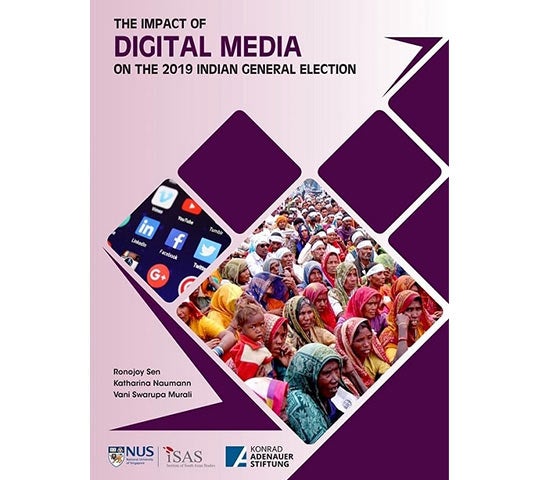
| Title: | The Impact of Digital Media on the 2019 Indian General Election |
| Author/s: | Ronojoy Sen, Katharina Naumann, Vani Swarupa Murali |
| Abstract: | The 2019 Indian general election saw the widespread and innovative use of digital media and technology. Most political parties employed digital media extensively for campaigning and voter mobilisation. This extensive use of digital media was due to nearly half of India’s 900 million eligible voters having access to the Internet and social media. The country has around 300 million Facebook users and over 200 million on WhatsApp, which is more than any other country. Indeed, the 2019 election was dubbed by many as the ‘WhatsApp’ election. In addition, millions in India use other media platforms such as the regional language platform ShareChat and the globally popular TikTok. The Institute of South Asian Studies at the National University of Singapore and the Konrad Adenauer Stiftung organised a joint workshop titled ‘Digital Media, Politics and Elections in India’ on 28 June 2019. The event brought together researchers, policymakers and representatives of digital media companies. This report largely draws upon the discussions at the workshop. It focuses on two key areas. First, the new campaign strategies used in 2019, such as different types of political rhetoric, the use of vernacular language mediums and the seamless transition between the online and offline space. Second, the imperatives of regulation and how they relate to artificial intelligence, ethics and state institutions. There were remarkable changes between the Indian general election of 2014 and 2019. The digital divide within India increasingly narrowed and this made it even more important to study the effect of digital media on politics. In 2014, one in five Indians had access to digital media and that increased to one in three in 2019. The quality of access also dramatically improved with low-priced smartphones and cheap data plans. The 2019 general election saw a spike in online rumours and fake news. There were efforts at regulation by the government, particularly the Election Commission and technology companies. These, however, turned out to be of limited efficacy. |
| Date: | 31 October 2019 |
| Read More |
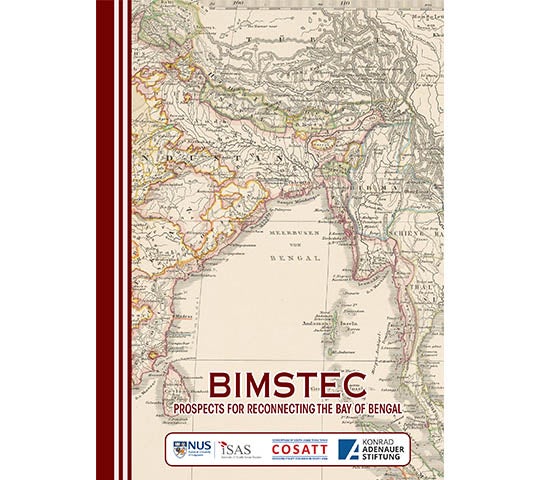
| Title: | 63: BIMSTEC: Prospects for Reconnecting the Bay of Bengal |
| Author/s: | Amitendu Palit and Silvia Tieri |
| Abstract: | Regional integration and connectivity initiatives in Asia have received a boost from the noticeable spike in interest on the Bay of Bengal Initiative for Multi-Sectoral, Technical and Economic Cooperation (BIMSTEC). The BIMSTEC has moved at an exceptionally sluggish pace for more than a decade after its initial formation in 1997. Over the last few years, however, the BIMSTEC has captured considerable attention. Much of the attention is on account of the government of Prime Minister Narendra Modi in India focusing prominently on the BIMSTEC as key parts of its ‘Neighbourhood First’ and ‘Act East’ policies, envisioned through India’s more meaningful engagement with not only neighbouring South and Southeast Asia, but also the rest of the Asia-Pacific. As the largest economy in the BIMSTEC, India’s role is vital in expanding its scope and realising its prospects. The strategic importance devoted by India to the BIMSTEC is evident from the invitation to the Heads of States of the BIMSTEC member countries to attend the swearing-in ceremony of Prime Minister Modi as he assumed his second term in office on 30 May 2019. The invitation to the BIMSTEC also sparked speculation over whether, from an Indian strategic perspective, greater engagement with the BIMSTEC meant a commensurate disengagement with the South Asian Association for Regional Cooperation (SAARC). India’s disappointment with SAARC as a regional forum, as opposed to the brighter prospects it visualises from the BIMSTEC, has been evident from the Indian External Affairs Minister Dr S Jaishankar’s emphasis on the ‘energy’ in the BIMSTEC vis-à-vis the ‘problems’ in the SAARC. Given the Indian attention, as well as that from the region, on the BIMSTEC, which is contributed in no small measure by the burst in regional connectivity across Asia, this Special Report studies the BIMSTEC and its key priorities. Discussing the BIMSTEC’s progress as an organisation and its work areas, the paper reflects on the importance of connectivity for the BIMSTEC as it works hard to step up intra-regional transport linkages through land, sea and cyberspace. This report underlines the importance of the BIMSTEC establishing its long-term credibility with local populations and communities for successful maturing, as well as the benefits it can obtain by locking onto ongoing regional connectivity projects, and the implementation of ‘best practices’ in the areas of trade facilitation. Its key challenge is to overcome its sluggish pace of progress, which again, can be addressed, if it adopts the successful cooperative practices that some members have already put in place, like India and Bangladesh within the Bangladesh-Bhutan-India-Nepal (BBIN) sub-regional grouping. Successful cooperative frameworks like the understanding reached on intra-regional grid connection enabling trade in electricity can enable members to achieve substantial long-term benefits and establish an inclusive model of regional cooperation. While India will continue to be prominent in the BIMSTEC by its sheer size, its commitment to the region as a development partner will reduce misgivings about its role. This report has been drawn from the discussions and views presented at ‘BIMSTEC at 20: Priorities and Prospects’ – a workshop organised jointly by ISAS with the Consortium of South Asia Think-Tanks and the Konrad-Adenauer-Stiftung – in Singapore on 24 September 2018. Ambassador M Shahidul Islam, Secretary-General of the BIMSTEC, delivered the keynote address at the workshop, and Ambassador Ong Keng Yong, Executive Deputy Chairman of the S. Rajaratnam School of International Studies at the Nanyang Technological University, Singapore, delivered a special address. The workshop was attended by delegates from all BIMSTEC member countries. |
| Date: | 30 September 2019 |
| Read More |
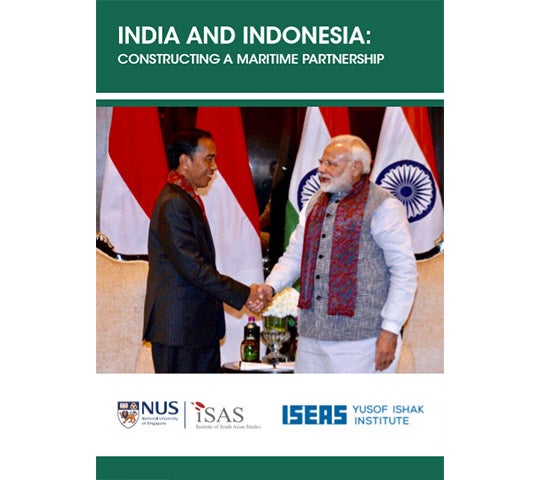
| Title: | 61: India and Indonesia : Constructing a Maritime Partnership |
| Author/s: | Mustafa Izzuddin and Ankush Ajay Wagle |
| Abstract: | Although Indonesia and India are neighbours in the Indo-Pacific region with deep historical and cultural linkages and a shared colonial past, there has been little cooperation between them in the maritime domain. In recent years, however, that has begun to change amidst the growing political engagement between the two nations consonant with the construction of a maritime partnership. This maritime partnership between India and Indonesia is shaping up in the shared Indo-Pacific, which is under intense scrutiny as a geopolitical construct. This partnership – premised on security and economic cooperation – is bound to be critical as the Indo-Pacific region is increasingly disruptive and turbulent. |
| Date: | 27 July 2019 |
| Read More |
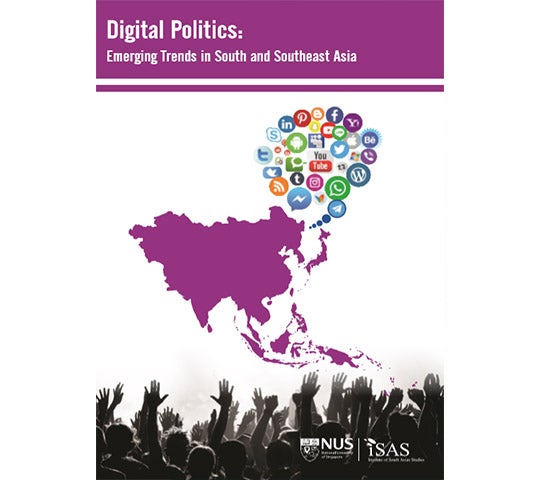
| Title: | 60: Digital Politics: Emerging Trends in South and Southeast Asia |
| Author/s: | Ronojoy Sen and Vani Swarupa Murali |
| Abstract: | The digital media landscape has undergone significant changes over the last decade. While Facebook remains one of the most widely used social media platforms globally, messaging platforms like WhatsApp not only have a huge number of users in countries like India and Indonesia, but have also become a dominant news-sharing avenues. Though the global digital divide still exists, the smartphone has been crucial to the rapid evolution of digital politics in South and Southeast Asia. Internet penetration in South Asia now stands at roughly 42 per cent, compared to 63 per cent in Southeast Asia. The Institute of South Asian Studies at the National University of Singapore organised a roundtable titled ‘Digital Politics: Emerging Trends in South and Southeast Asia’ on 5 December 2018. The event brought together researchers, policymakers and representatives of digital media companies |
| Date: | 28 May 2019 |
| Read More |
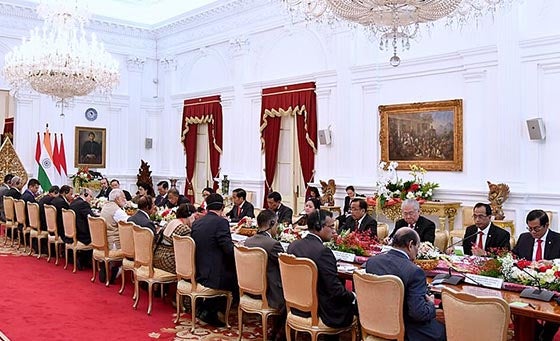
| Title: | 59: India and Indonesia in the Indo-Pacific |
| Author/s: | Ian Storey and Mustafa Izzuddin |
| Abstract: | The ISEAS-Yusof Ishak Institute and the Institute of South Asian Studies (ISAS) at the National University of Singapore (NUS) jointly organised a panel discussion on ‘India and Indonesia in the Indo-Pacific’ in Singapore on 9 April 2019. Over 50 people attended the session. The panellists included Mr Jusuf Wanandi, Vice-Chairman, Board of Trustees, Centre for Strategic and International Studies Foundation; Ambassador H K Singh, Director-General, Delhi Policy Group; Professor Dewi Fortuna Anwar, Research Professor, Research Centre for Politics, Indonesian Institute of Sciences; Vice-Admiral (retired) Anil Chopra, Former Commander-in-Chief, Eastern and Western Naval Commands, Indian Navy; and Mr Siswanto Rusdi, Founder and Director, National Maritime Institute. The discussion was moderated by Professor C Raja Mohan, Director, ISAS. Mr Daljit Singh, Senior Fellow and Coordinator of the Regional Strategic and Political Studies Programme, ISEAS-Yusof Ishak Institute, presented the closing remarks. |
| Date: | 28 May 2019 |
| Read More |
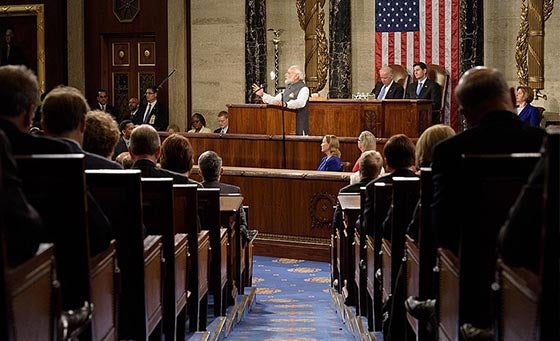
| Title: | 58 : Analysing the United States’ Vision for the Indo-Pacific |
| Author/s: | Ankush Ajay Wagle |
| Abstract: | The Institute of South Asian Studies at the National University of Singapore and the AtlanticCouncil, United States, jointly organised a workshop on ‘Analysing the United States’ Vision for the Indo-Pacific’ on 20 November 2018. The discussion hosted experts who discussed the ‘Indo-Pacific’ concept of the American administration, which seeks to promote economics, governance and security in Asia. |
| Date: | 17 February 2019 |
| Read More |
Load more


